 Acquisition Strategies / Funding Models / WildBrain’s Eric Ellenbogen
Acquisition Strategies / Funding Models / WildBrain’s Eric Ellenbogen




 Acquisition Strategies / Funding Models / WildBrain’s Eric Ellenbogen
Acquisition Strategies / Funding Models / WildBrain’s Eric Ellenbogen





Our Playground is Getting Bigger
 Ricardo Seguin Guise Publisher
Ricardo Seguin Guise Publisher

Mansha Daswani Editor-in-Chief

Anna Carugati
Editor-at-LargeKristin Brzoznowski
 Executive Editor
Executive Editor
Jamie Stalcup
Associate EditorDavid Diehl

Production & Design Director
Simon Weaver
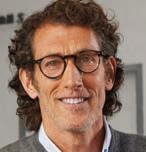 Online Director
Online Director
Dana Mattison
Sales & Marketing DirectorGenovick Acevedo
Sales & Marketing ManagerAndrea Moreno Business Affairs Manager
Problem-solving is at the heart of so many kids’ shows; it also needs to be at the top of executives’ agendas as they navigate a landscape markedly different from the one just 12 months ago.
Funding has always been a challenge; it’s even more of one now as some services scale back their original spend and broadcasters brace for the ad downturn that is projected for this year. Channels are going online only; CITV is the latest to announce that move. Kids are still spending a lot of time on free digital services, so figuring out how to have a presence there is para mount—while also being attuned to the needs of whoever contributed to the funding that got the show off the ground.
Having a YouTube strategy was among the key topics discussed at our third annual TV Kids Festival. “One of the things that is so exciting about YouTube is it’s the most datarich environment we’ve ever had and the richest with engagement as well,” David B. Williams, senior VP and general manager of channels for pocket.watch, said during our Making Sense of YouTube panel discussion. “Sometimes I call it the Galapagos Islands of the media because it’s like this fiercely competitive environment where you see all these new forms of life evolve.”
Francesca Newington, director of the POP Channels at Narrative Entertainment, said that YouTube is a key priority for the portfolio this year. “Both as a platform for discovery but more than that. We’re currently assessing all our rights situations. We’ll be focusing on growing our subscribers and then providing lots more unique content that isn’t available on our other platforms. We have big plans for growth across YouTube for this year.”
As dynamics in the kids’ industry shift again, leading kids’ producers and distributors are returning to traditional co-production models to piece together the financing puzzle.
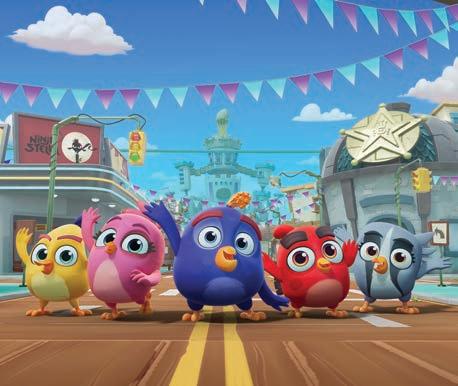
Several programmers share how they are finding breakout properties amid the abundance of content available on the market today.
Ricardo Seguin Guise
PresidentAnna
Carugati Executive VPMansha Daswani
Associate Publisher & VP of Strategic DevelopmentTV Kids
©2023 WSN INC.
1123 Broadway, #1207 New York, NY 10010
Phone: (212) 924-7620
Fax: (212) 924-6940
Website: www.tvkids.com
The crucial role of YouTube in brand-building strategies came up across the conversations with WildBrain’s Eric Ellen bogen, Mattel’s Richard Dickson and 9 Story Media Group’s Vince Commisso in this edition. We touch on the rising prominence of AVOD in a show’s overall value chain in a piece on funding models. And we hear from buyers about their approach to rights in our report on acquisition trends.
While their needs differ, the programmers we spoke to all stressed the importance of co-viewing and representation. Chris Nee, who created Doc McStuffins, has built a successful career developing shows that bring kids and families together. She shares with TV Kids how she is using her resources to expand opportunities for underrepresented talent in children’s media.

Quantum Heroes Dinoster / Super Wings / Petronix Defenders
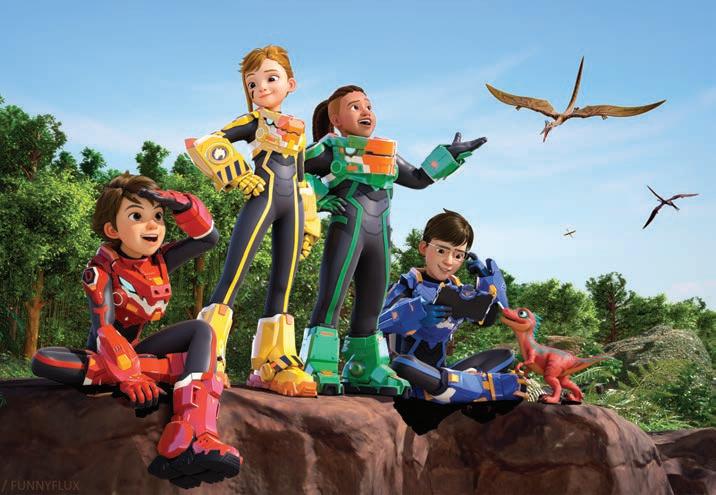
Alpha Group is highlighting its brand-new show Quantum Heroes Dinoster, about four kids who travel secretly to a world of dinosaurs. Together, they complete missions to save and protect dinosaurs from natural dangers and from a mad scientist, Bex Hunter. “We are very excited to present this promising show with a high level of production, compelling stories and full of comedy,” says Silene Chaves, VP of international, media and consumer products. There’s an eighth season of Super Wings, which sees the heroes gain new powers and get updated transformation suits to match a fresh new electric concept, which celebrates clean, green, renewable energy. Alpha Group is also promoting Petronix Defenders, in which Matt, Emma, Jia and Tom rescue endangered animals with their high-tech pets and equipment.



The live-action series Crazy Fun Park, from the Australian Children’s Television Foundation catalog, features horror and comedy as it follows a shy teen who wants desperately to fit in and enjoy his high school years—if only his dead best friend and a posse of rotting ghouls would stop sabotaging him at every turn. In the preschool arena, the animated series Kangaroo Beach follows four young animal friends who share an action-packed summer training as cadets with their lifeguard heroes. Phil Breslin leads the factual adventure series Built to Survive, in which the host gets up close to some of the world’s most unique creatures to reveal the ultimate survivors of Australia’s most extreme habitats. The company also has on offer the live-action drama MaveriX, featuring six young motocross riders.

A brand-new season of Angry Birds Bubble Trouble is on offer from CAKE, this time following the daydreaming birdies as they leave the safety of their bubble garden and venture into the big city. “The latest installment from Rovio promises to entertain viewers of all ages,” says Ed Galton, CEO of CAKE. “440 episodes of non-dialogue Angry Birds content are now available and working well across all platforms.” There’s a new special in Fresh TV’s Total Dramarama franchise: Total Dramarama—A Very Special Special That’s Quite Special CAKE is also presenting the African animated superhero show Super Sema, produced by the London- and Nairobi-based female-led studio Kukua. Super Sema is executive produced by Oscar-winning actor Lupita Nyong’o and written by BAFTA winner Claudia Lloyd.
“We aim to always offer high-quality productions with unique storytelling propositions.”
—Silene Chaves
“Our focus at this market is to acquire new content for distribution and to build on our exciting new development slate with unique stories from around the world.”
—Ed GaltonSuper Sema

Droners / Gigantosaurus / Taffy
The first episodes of Droners season two are being presented by Cyber Group Studios at MIPTV. “Comedy, adventure, action, girl leaders and eco-consciousness are key words in this series,” says Raphaëlle Mathieu, executive VP. The MIPTV slate also includes season three of the hit preschool dinosaur series Gigantosaurus and seasons one and two of the slapstick comedy Taffy , for kids 6 to 10. Titles from the Splash Entertainment catalog, such as Chloe’s Closet and Sabrina: Secrets of a Teenage Witch , plus specials such as Norm of the North , are on offer through Cyber Group Studios as well. “We are committed to being a one-stop shop for our buyers, ensuring that they can always find what they need in the realm of kids’ and family animation,” Mathieu says.


Mystery
Leading HARI’s highlights, Mystery Lane follows detective hamsters around London as they solve cases that Scotland Yard cannot. Sophie “Kido” Prigent, head of sales, describes the series as “Scooby-Doo meets Sherlock Holmes.” In The Weasy Family, HARI combines non-dialogue slapstick comedy with a heartwarming narrative to tell the story of a burglar weasel who becomes a father to two girl ducklings and finds new meaning in life. Grizzy and the Lemmings World Tour sees the characters embark on a journey when their Rangers’ station accidentally takes off. “We produce shows that will make kids laugh their heads off no matter where they are in the world,” Prigent says. “Any kid can identify with our extraordinary animal characters. Their personalities—whether they’re wacky, bold, quirky or shy—will inspire them.”


Mediatoon Distribution is shining a spotlight on The Marsupilamis, a comedy originally commissioned by M6/Gulli. It gathers “all the ingredients we love in a kids’ comedy series: awesome stories, iconic characters, premium CGI, a colorful universe and a double scoop of comedy,” says Jérôme Alby, managing director. Various anime titles feature on Mediatoon’s slate, including the newly acquired Edens Zero, which comes from Hiro Mashima. “This acquisition further reinforces our anime slate, which already features star shows such as Naruto, Hunter x Hunter and Fairy Tail,” Alby says. The upcoming family sitcom Living with Dad sees four daughters take over a household managed by their single dad. “By breaking stereotypes, this comedy series will definitely have global appeal,” notes Alby.
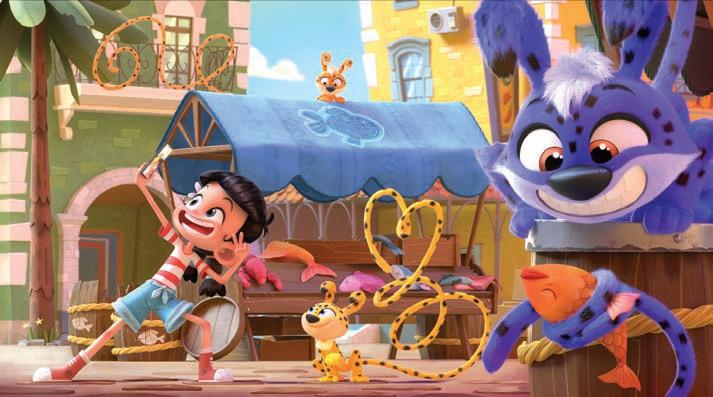

“We are proud to offer a diverse array of content, including cartoons, anime, CGI, preschool, kids’ and family content.”
—Raphaëlle Mathieu
“We look forward to seeing our friends and partners, getting to know new ones and having passionate talks about their programming needs.”
—Jérôme Alby
The Marsupilamis
“We produce premium IPs with strong brand potential and develop a unique editorial line, focused on comedy and slapstick that resonate with family audiences worldwide.”
—Sophie “Kido” Prigent

The Sound Collector / The Ghastly Ghoul / Flix
The Sound Collector , represented by Serious Kids and produced by Eagle Vs Bat, has Keira Knightley as narrator. It centers on the world of sound, as heard through the ears of a small being who is hard of hearing but enjoys exploring the noises of the world around him, including the hissing of the tide on a pebble beach and the popping of sea anemones. The Ghastly Ghoul, from Dream Logic Studios and Lupus Films, features a diverse cast and colorful designs. Also on offer, Flix is the first animated series based on Tomi Ungerer’s work. “The core values of the show are widely sought after, such as tolerance, courage, friendship, community and family unity,” says Leila Ouledcheikh, senior VP of global distribution and commercial development at Serious Kids.
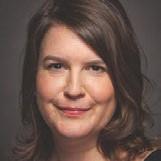

Phoenix Rise / Alma’s Way / Odd Squad
The Sinking Ship Entertainment slate features the brand-new school drama series Phoenix Rise, from BBC Studios. It centers on six students who form an unbreakable bond as they navigate the trials and tribulations of life in school. From Fred Rogers Productions, the bridge preschool series Alma’s Way follows 6-year-old Bronx-born, Puerto Rican Alma, who is just beginning to think on her own. She takes moments for “Think Throughs,” in which she reflects on what has happened and what could happen next. The long-running math comedy series Odd Squad is also on offer. Kate Sanagan, head of sales and distribution at Sinking Ship Entertainment, notes that these series feature “high production values, entertaining subject areas for kids across broad age ranges and a window into kids’ authentic lived experiences.”

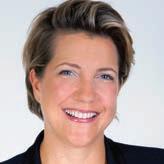
Spellbound , a spin-off of Find Me in Paris , leads ZDF Studios’ MIPTV Junior catalog. It centers on a 15-year-old girl who has relocated from a small U.S. town to France to study at the Paris Opera Ballet School. Her life is turned upside down when she discovers a book of family spells and unknowingly casts the antidote to a protection spell that has hidden her identity since she was a child. The preschool series Maari—Adventures at the Reef follows a squid and her friends as they solve problems, such as human garbage polluting their home. “The very timely topics of diversity and environmental protection are core themes of the series,” says Katharina Pietzsch, Director Junior. In Superhero Academy , a group of first graders attend an unusual boarding school for future superheroes.
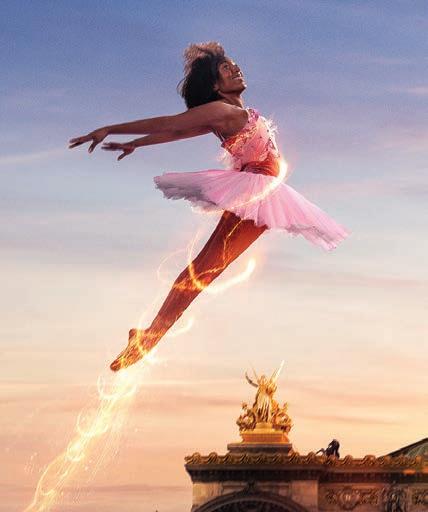
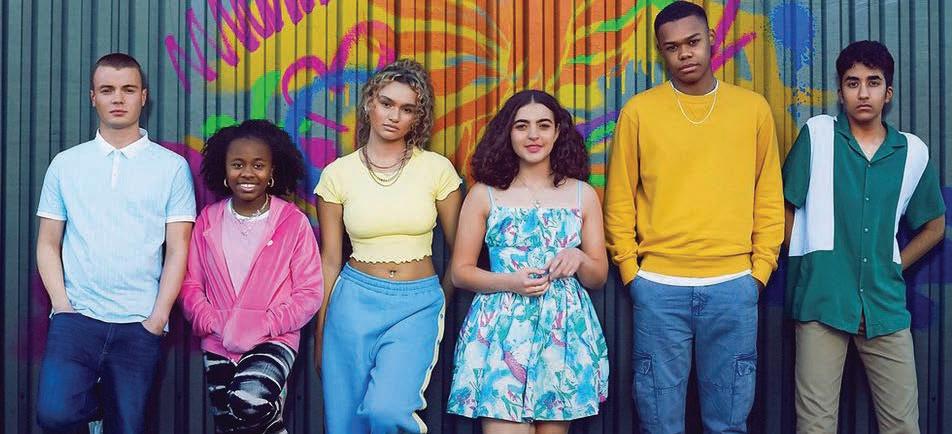
“We want to send a positive message, educate kids and put things in context, but also empower children and give them a voice.”
—Katharina Pietzsch
“All of these shows include key ingredients that make them internationally appealing.”
—Kate Sanagan
Spellbound
“Our high-end slate continues to grow steadily.”
—Leila OuledcheikhFlix Phoenix Rise

The TV KIDS SUMMER FESTIVAL is a four-day must-attend virtual event taking place a week prior to Annecy/MIFA.
Set to be held from June 6 to 9, 2023, the third edition of the TV KIDS SUMMER
FESTIVAL will feature keynotes and panels with leading executives and creatives discussing the major trends in the children’s programming business. It will be streamed live and available on-demand for two months in TVKidsSummerFestival.com. For sponsorship opportunities, please contact Ricardo Guise at rguise@worldscreen.com or Dana Mattison at dmattison@worldscreen.com.

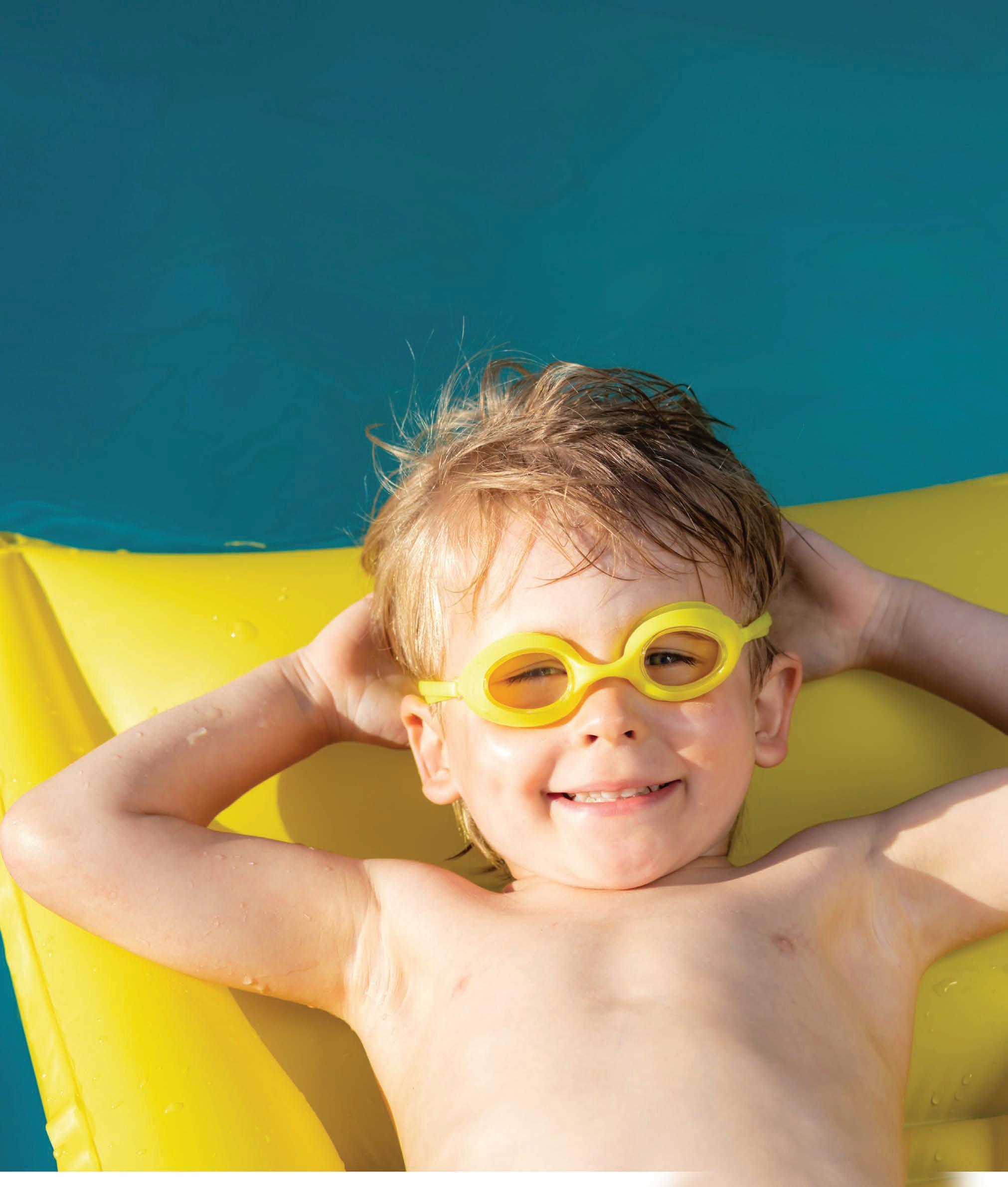



With the soon-to-be renamed HBO Max amid an overhaul as it merges with discovery+, strategy changes at Netflix and other streaming services and broadcasters, commercial and public, figuring out how to do more with less, funding models are being upended yet again. But distributors who have been in and around the sector for a long time don’t seem too stressed about the changes afoot; as usual, they are relying on the creativity that has long defined the kids’ programming industry to get great shows made.
“Officially, we’re not in a recession, but I would say the entertainment industry probably already is in a recession,” concedes CAKE CEO Ed Galton. “Buyers are being more cautious about the content they are trying to acquire. Budgets have been put on hold. I anticipate 2023 to be somewhat of a different difficult year. But I think once we get past 2023, in 2024 or 2025, things will start getting better again.”
Frank Falcone, president and executive creative director at Guru Studio, believes that the market is beginning to settle somewhat after the spending spree that happened before and during the pandemic.
“There was an abundance of content created with overexuberance and enthusiasm for the people trapped at home that were suddenly a captive audience. A lot of that content isn’t attracting the eyeballs. It’s time to regroup and look closer at what we’re commissioning. It’s healthy for the business to make things people watch and not burn money on shows that never find an audience.”
It is a challenging landscape today, though, when it comes to putting budgets together. “We see consistently 20 to 30 percent gaps in our financing across all shows,” Falcone explains. “You have an anchor tenant and other broadcasters, and then you’ve got this large nut to crack. The discussion can only move toward venture capital and private equity financing. That creates many challenges for producers because the business for that show has to be greater than just selling content to other broadcasters. It has to be a much larger package of a larger offering. I feel for anyone entering the business right now as a TV producer who wants to just make a show. If your company’s positioned with the ability to flex in licensing and other areas, you can at least bring that to the table. For an independent producer, it becomes a lot more challenging to raise the financing. You’re dependent in some ways on the graces of a public broadcaster or the belief that the show will matter from an executive. And that’s dwindling, given the lack of success some of these big swings have created on the platforms in the last couple of years.”
Raphaëlle Mathieu, executive VP at Cyber Group Studios, says that the changing market dynamics mean that the number of models available to assemble a show will likely multiply.
“I do not believe there is going to be a shift from one model to another; I trust different models will co-exist, and depending on the type of momentum or content, we will turn to a specific one.”
Katharina Pietzsch, Director Junior at ZDF Studios, says the key to dealing with funding challenges today lies in getting the right partners on board a project. “As well as the financials, the rights needed and taken by each partner need to be aligned as well as the editorial line—all partners must share the same creative vision for the project.”
As dynamics in the kids’ industry shift again, leading kids’ producers and distributors are returning to traditional co-production models to piece together the financing puzzle. By Mansha Daswani
Cyber Group Studios has a slew of partners on board 50/50 Heroes, including France Télévisions.

And flexibility is paramount, explains Sophie “Kido” Pri gent, head of sales at HARI. “Finding compromises on rights, license periods, territories, feeds, etc., enables producers to add funding partners at the financing stage or right after the green light; that’s a must these days when the broadcasters’ and platforms’ budgets get reduced.”
The influx of money into the ecosystem over the last few years did set unreasonable long-term expectations, observes CAKE’s Galton. “When you have people like Net flix giving you 100 percent finance to make a show; they’re giving you $15 million to $18 million to produce a series, and then suddenly that starts to go away, that’s becoming a problem for a lot of people. We’re relying on a small number of platforms that were doling out a lot of
money to get shows off the ground. We’re almost going back to the model that some of us were very successful at for many years, which is putting multiple partners together to get to 100 percent. That is the model that we’re looking at. We would love to continue working with people like Netflix, Disney and all the other platforms that can get you to 100 percent faster. But there will also be those co-pro models that we will cobble together deals to get us to 100 percent so we can go into production.”
As costs rise and budgets are restricted, “there continues to be a great demand for working together and sharing costs,” ZDF Studios’ Piet zsch says.
As for making those collaborations work, Cyber Group’s Mathieu emphasizes the need to “establish clear communication, set realistic expectations and align on creative vision and objectives. It’s also important to have a thorough understanding of each territory’s regulatory and cultural landscape, as well as a willingness to adapt to local market conditions.”
Of course, exclusivity can often be a sticking point, with platforms’ and broadcasters’ need to have something unique to offer their viewers often at odds with rights holders wanting to have ubiquity to build a multiplatform brand.
“If we are talking about an original series, the desire for long exclusivity is extremely strong,” Mathieu says. “If we are working based on co-production and presales financing, there is more flexibility. However, this flexibility is often linked to the amount invested—the more invested, the less possibility of a short-term window until now.”


Indeed, Mathieu does see the rights-ask situation evolving, “especially for content with strong potential for merchandising,” she says. “After a window of exclusivity, it is very helpful to have other potential exposure to maximize merchandising revenues.”
“I’ve been a big advocate of sharing rights and nonexclusive rights for as long as I’ve been doing this job,” says Galton at CAKE. “Brands can’t exist on one platform anymore. You don’t have enough eyeballs anymore to allow brands to succeed. You have to be on multiple platforms to get maximum eyeballs. The platforms and the broadcasters are all now starting to understand that. It’s not perfect yet, and there’s still a long way to go, but we’re seeing a lot more cooperation than we have in the past. I hope this will continue without degradation of investment and license fees from our partners.”
Pietzsch at ZDF Studios reflects a similar sentiment, explaining: “Some global partners are willing and able to carve out or hold back in certain territories and on rights if the overall model makes sense to them. At the same time, partners from ‘smaller’ territories and with limited
acquisi tion budgets are increasingly interested in coming on board early to secure content that would otherwise end up in a multi-territory deal and not be available to them.”
Prigent at HARI agrees that clients are becoming more flexible. “With open communication, we manage to find ways to make things work according to the budgets allocated, but also because IPs that work well elsewhere are attractive to all to drive and retain the audience.”
As such, FAST and AVOD services are becoming increasingly crucial to distributors as they look to build awareness and maximize revenues across the value chain.
“AVOD is crucial to the exposure of IP,” Prigent adds. “Retaining some flexibility to exploit at least clips and a few episodes benefits both the producers and the broadcasters. It’s impossible to want brand recognition without YouTube exposure; for Grizzy & the Lemmings, we have 1 billion views per year on YouTube fed by our content and our partners’ promotional efforts.”

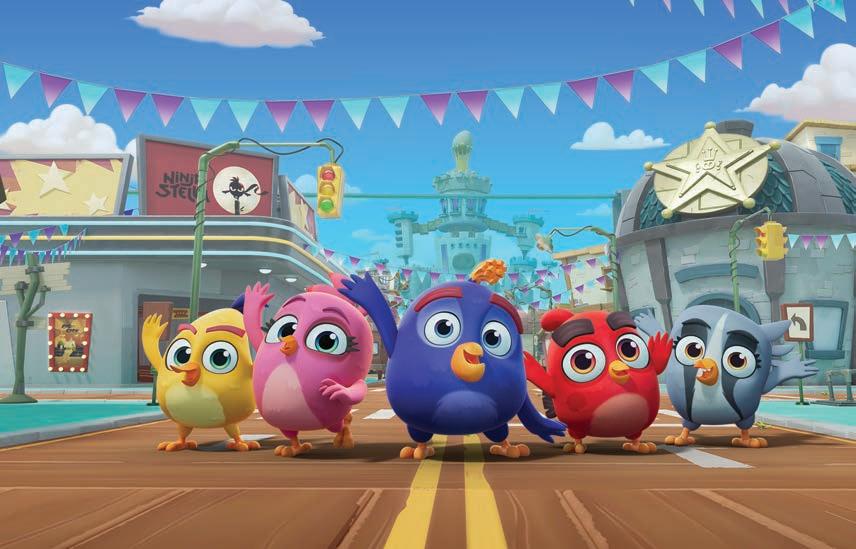
Prigent continues: “We’re having a lot of discussions with our free-TV partners around the FAST model because they’re moving in that direction to either offer a simultaneous service or one meant to replace their linear channels in some cases.”
Mathieu believes that “AVOD/FAST is a must now. At this stage, we focus more on the back catalog content that is available. Still, we are working on creating digital native content as we did with Giganto Club, a great spin-off of our flagship series Gigantosaurus.”
Galton says he is a firm believer in the ad-supported VOD business. “It’s just a matter of how that shakes out and how the platforms come together and allow that to happen. I believe that that will be where we will ultimately profit in the future.”

Between the raft of new commissions making their way onto the market and shows that have been canceled by one streamer or another as they refocus their strategies, there is an awful lot of kids’ content available in the landscape today. As buyers sift through this abundance of choice, they’re having to be especially selective as they look for new ways to keep young ones engaged amid the myriad other options they have for their entertainment—while also making sure those shows are available on all the platforms kids are using today.
At Paramount Global in the U.K. and Ireland, Louise Buc knole, general manager of kids and family, heads up a portfolio that includes the Milkshake! free-to-air block and the Nickelodeon portfolio of channels. “We have VOD, linear channels, a FAST platform with Pluto TV and an SVOD with Paramount+,” she explains. “We’re always looking for content for all of these platforms, so acquisitions are really important.” These sit alongside the company’s internal content pipeline.
“We do a lot of commissioning in the U.K. for the Milkshake! block, which is on Channel 5, so we look at about two to three additional acquisitions to bolster what we have and complement that in the U.K. And for the Nick network, this could be anything from preschool to older kids, live action and animation. We look at what gaps we have. It could be franchises or particular IP that is of interest to us.”
As director of kids’ content for Sky in the U.K. and Ireland, Lucy Murphy is catering to an audience of 1- to 10-year-olds. They expect to see “premium entertainment” across multiple genres and formats, she says. “We have around 10,000 episodes of on-demand content, and a lot of that comes from the partner channel deals that we have.” New to her remit is a Sky Kids linear service, targeting children aged 1 to 7. “In terms of the acquisition deals we do, we buy large packages, e.g., from LEGO or DreamWorks Animation, but we also cher ry-pick one-off titles so that we’ve got that entire demographic served with the right shows that they want to watch.”

Leading programmers share how they are finding breakout properties amid the abundance of content available on the market today.
Acquisitions are also crucial at French-Canadian broadcaster TFO, according to Marianne Lambert, director of acquisitions and co-productions, noting they make up about 85 percent of the slate. “We also do co-productions and independent productions, but mostly, for all our platforms, it’s acquisitions.” TFO operates a linear channel for kids, an educational website for teachers and TFO.org, “which we’re transitioning into an OTT platform with our linear channel. We also have a YouTube channel, but we mostly use it for promotional purpos es. When we buy, it’s for all those platforms at the same time.”
HappyKids, meanwhile, a connected TV streaming app, is entirely reliant on acquisitions. David Di Lorenzo, senior VP of kids and family for Future Today, the app’s parent company, is on the lookout for a broad range, “whether it’s earlylearning content from CoComelon or user-generated content in gaming from Roblox or Minecraft or popular IPs like Transformers or Ninjago to YouTube [channels] like K-City or Kids Diana Show. Today’s audience is looking for broadbased content across multiple platforms. Our job is to find content that our audience wants to watch.”

As for what fits that bill, each buyer surveyed here has specific brand remits they keep in mind when filtering through available options. Murphy at Sky Kids says she starts with, “Are kids going to love what they see? Is it premium, distinctive and original? Just as important, are parents going to love it too? Especially when you’re acquiring and commissioning shows for younger children, it’s really important that parents feel good about what their children are watching.”
Bucknole stresses the importance of British content for Milkshake!, although she and her teams will consider shows from elsewhere. “We celebrate kids and families within this content.” Nickelodeon’s approach is “kids first,” Bucknole notes. “We want to focus on their point of view. It’s largerthan-life characters and how we bring that slice of life into our content. We follow the brand values of heart, smart and fart! We want it to be entertaining to them. We want them to learn something and also feel that emotion as well.”
For Lambert, content has to be in French, “which is not that easy to find,” she says. “We started programming a lot of dubbed series, so that’s helped a lot. It has to be educational, but it doesn’t have to be about a specific [subject] like math or science. It can be loosely educational. It can be about social-emotional responses, living in a group, relationships, critical thinking. It’s really important to us that casting be diverse. We want our shows to represent Canada as it is today, being inclusive of all communities, people with all kinds of bodies, different backgrounds and abilities, without making that the center of the story. We want the kids we’re casting to represent all communities and all shapes and sizes. We like to look for material that’s different, a unique way of telling that story. We’re always looking for innovation. And I guess our model is, how can we make them learn a little bit as they are having fun? Humor is really important. We want kids to laugh.”
Murphy also references the importance of representation. “We lean into inclusion and diversity and do an awful lot in that
respect. We also have very clear principles around the environment. We want to have shows that demonstrate clear, planet-friendly principles. It doesn’t mean that all our shows are eco because they’re not. But we want shows that do represent planet-positive behaviors. We would shy away from shows with planet-negative behaviors unless we’re talking about that from a news or current-affairs perspective. We’re creating positive TV shows that kids will get something out of. It’s not an empty viewing experience.”
As for what programmers are eager to find now, Lambert highlights a need for content that skews older—“It’s difficult to find content for teenagers”—as well as shows for the core 6-to-9 set. “We want innovation and different ways of telling stories. We have a hard time finding content for 6to 9-year-olds. Live action also is difficult for us because it has to be dubbed. Since we are educational and our content is used to teach, there are certain things like STEM and examples of girls in science, those kinds of role models. It’s really hard to get a show about math, so we’re always on the lookout for that. Indigenous perspectives are really important. And also, environmental concerns are big right now.”
“We’re looking for killer, not filler,” Bucknole quips. “We want the shows that are going to stand out. We’ve got a lot of franchise shows on the Nickelodeon channels. Comedy is really important, and that could be with animation or live action. Those are the formats that we’re looking for that will work globally. It needs to be lovable characters that will carry globally for the Nickelodeon networks. Specifically for animation, we will look for characters and storylines that will complement what we already have on the channels. How is this going to sit with SpongeBob SquarePants and PAW Patrol? For Milkshake!, we’re very interested in game shows at the moment and also slapstick and comedy silliness. We’re also looking for content that has a lot of STEM. Sustainability is also very important to us. We know kids love animals, so we’re looking at various animal and pet care [shows]. We obviously would look at
any shows that have a great story or are book-based IP, or have the potential to be a franchise. Fact-ent formats are quite interesting for Milkshake! because we’re a public-service broadcaster. Those formats where they’re representing kids and showing their world. Preschool animation is very important to us. It’s always looking for that uniqueness and what makes this stand out. What will make the kids draw the picture, hum the theme tune and play based on that show? They’re always going to be the winners for us.”

Murphy at Sky Kids, meanwhile, is especially on the lookout for “half-hour specials with that real evergreen longevity. We’re keen to find something for younger viewers that gets them up and moving around. We’ve got lots and lots of songs and sing-alongs, so we’re not necessarily looking for that but something that encompasses music and singing. We’re also looking for shows that spark a bit of curiosity in a child. It’s not necessarily a didactic educational show but something that will make them wonder about the world around them. We’re looking for shows that have followthrough and a lasting value to them.”
HappyKids is fairly well served on the preschool front, Di Lorenzo says.

“Our focus right now is really on our 6-plus audience. We’ve been focusing on live-action series, trying to find more movies for our audience, looking at science exploration and things that will bring the family together to watch.”
Of course, spotting an idea you love is just one part of the puzzle; securing the rights you need is a whole other challenge.
“We don’t need exclusivity,” says TFO’s Lambert. “We work well with other French-Canadian broadcasters, having co-exclusivity or sharing rights. We do have exclusivity for our independent productions, and that’s fine. But acquisitions, we’re fine with sharing.”
For Murphy, “it’s not a deal-breaker,” she says, but a show that isn’t exclusive to her services “won’t attract the acquisition fees it would if it were! There are some shows you want to have because they’re really popular. But if it is everywhere all at once, it will be a much lower fee. The key for us is transparency. We need to know where else shows are going to be playing. We are a pay service, so our customers don’t want to be paying for things that are everywhere. We need to make sure there’s a balance of premium shows that we do have exclusivity for and popular franchises that may be on more than one platform.”
“For us, it’s not really about the exclusivity of owning a show, but maybe exclusive content around a particular show,” Di Lorenzo says. “For example, we did a deal with Moonbug last year where we got exclusive content around Blippi Blippi is on several platforms, but we were able to take ownership in some specific episodes that were only available on HappyKids.”
Milkshake! is “flexible in the rights and the shows,” Bucknole says. “It depends on the lane you go down, whether it’s a commission or a co-pro or an acquisition, and it depends on the price point. Some shows are franchise IP, so exposure on lots of different platforms is beneficial to build that brand. For the Nick content, it depends if it’s a local pickup or something we look at that is multi-territory or a global pickup—in which case, we probably would want all exclusive rights for all platforms. It depends on the IP, the show and the deal itself. We share a lot of content in the U.K. with other broadcasters, particularly indigenous languages.”
Ultimately, though, Bucknole notes, “We’re much more fluid now because we know that budgets are very challenged, and we have to be smart in our commissioning and acquiring.”

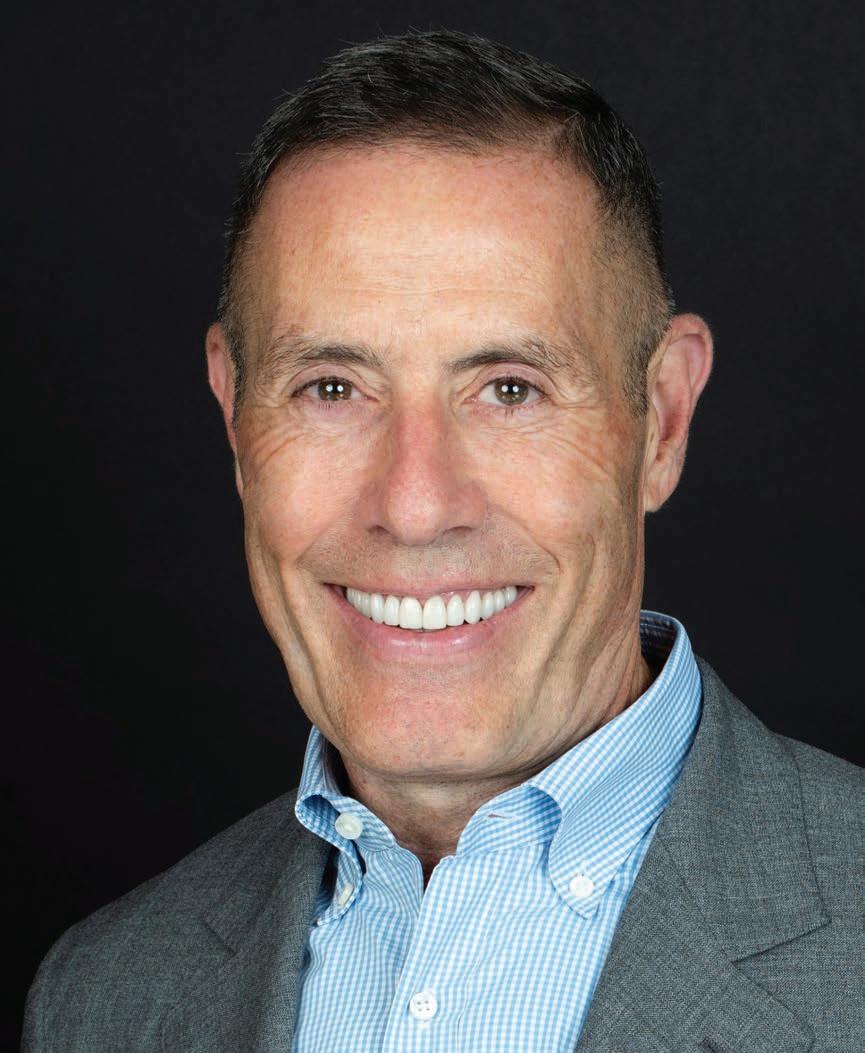
TV KIDS: How have you been using WildBrain’s IP activation strategy to grow your brands?
By Anna CarugatiWildB rain offers fans around the world many beloved franchises. Its studio in Vancouver is busy producing various titles, including The Snoopy Show , Sonic Prime and Chip and Potato . The distribution team sells a library of 13,000 half-hours of inhouse and third-party shows worldwide. WildBrain Spark entertains and engages kids and families globally on AVOD platforms with award-winning, broadcast-quality content. WildBrain CPLG handles licensing and merchandising. This route from creative ideas to the content on-screen to products on shelves is what Eric Ellenbogen, CEO and vice chair, refers to as the company’s 360 approach. It provides a roadmap for ensuring his teams reach and engage audiences and consumers wherever they are. He talks to TV Kids about managing brands and prioritizing creativity and IP.
ELLENBOGEN: It’s all about IP. Our studio and the entire organization are driven by prized, beloved and well-known intellectual property. That has enabled us to attract some of the greatest talent in the business—showrunners, writers, producers and animators. Content development is the first stage of everything. It is the start of our 360 model, and getting it right is very important. We’ve been very deliberate and careful in the rollout of that IP. That content then feeds our global distribution business, across every platform, including our own WildBrain Spark network. That, in turn, drives brand awareness, affinity and engagement with those audiences that ultimately results—for some properties, not all—in consumer product sales. These brands, many of which have been around for decades, continue to feed and build the library and then go back to other forms of distribution as we go through different windows. One of the things I find fascinating is that the business is moving from a model of pure exclusivity, although there are certain exceptions for certain telecasters, to the ubiquity of content across many platforms so that for audiences, no matter where they are, what language they speak, that content is always on, always available in different forms. But the availability and ubiquity of that content are critical to driving, particularly, the kinds of IP brands that WildBrain possesses. I can give some examples. In 2025, Peanuts will be 75 years old, which is remarkable. It has incredible engagement. When you think about its origins as a newspaper comic strip and how beloved this has become worldwide, it’s interesting because many audiences worldwide have never seen any Peanuts content. Those television specials I grew up on have had very little exposure outside North America. What has changed in this new world is the incredible, far-reaching relationship we now have with Apple TV+. They are the exclusive home of our new Peanuts content. And with a billion iPhones out there, this content is available to audiences now worldwide, obviously in multiple languages on a day-and-date basis. That content has been rolling out for several years. It’s getting increasing audiences and exposure, and Apple has been a remarkable partner for the marketing and awareness of that content. They understand the IP and have been supportive as well of the talent that we’ve attracted in production. The other interesting thing is rolling out that content in Chi na, [where] it’s had no exposure before. Apple TV+ doesn’t have a presence in that market, so we are distributing that content and creating awareness for Snoopy and the entire family. Snoopy in Space is not only just a show—Snoopy went into space with Artemis I. That has also fueled enormous growth in consumer products. While many may think of this as a kids’ property, it isn’t. It’s an all-family property. In Japan, which represents nearly 50 percent of all consumer products worldwide, they’ve seen no content. There are Snoopy cafés and hotels. So that has grown now into over $2.5 billion at retail.
The other IP we’re incredibly excited about and [released] on Netflix is Sonic Prime, in partnership with Sega. This is the biggest CG show ever to roll through our studio. It’s a good example of how we work with partners. Mattel is another one where it’s not IP we own, but we partner with them across consumer products, marketing, promotion and creative development.
TV KIDS: WildBrain has made some significant deals in the last year. What can you tell us about them?

ELLENBOGEN: To me, deals are just a reflection of successful creative and development. I use that as a measuring stick of how we’re doing in deploying, reactivating and unlocking those IPs. We generally never talk about development because my concern has been that you create an expectation, and I need to give the teams all the time in the world to get creative right. That is the priority at the company. It’s not just about creating the show or those deals, but do we have the 360 put together? Do we have the organization that supports creative development across the entire value chain, around every way of consumer engagement, and in particular, how audiences learn about new things? Our Spark division and YouTube channels are important in creating awareness and building an on-ramp to those properties. The deals, just as a measure of creative success, which is really what I care about, are myriad. We’ve had Caillou specials that are going on Peacock. That property, by the way, lived for a very long time just on YouTube. Then we started creating new made-forYouTube Caillou episodes, and then the Caillou library landed itself on Cartoon Network, and then new specials for Peacock. Yo Gabba Gabba!, another amazing audience favorite, is now with Apple TV+, [which] acquired the entire library. We’ve been making new Teletubbies on our YouTube channels and now have a new Teletubbies series [on Netflix]. The deal flow is important, but what’s more important is sustaining these [shows]. One-and-done is not the nature of our business at all. We are unique as a company with the ownership, care and feeding of these incredibly beloved franchises.
TV KIDS: Some prominent streamers have cut back on their children’s offerings. How do you see that impacting producers, distributors and children?
ELLENBOGEN: I think the headlines have been exaggerating the rationalization happening in the business. There has been enormous, unprecedented investment in content. Much of it was about audience acquisition and retention as the business moved from linear to nonlinear. We’re seeing rationalization now—more careful choices and development by the streamers. The level of investment is still extremely high. Kids’ content has always been a cornerstone of these services. It’s very hard to unplug your kids from any of these services. It’s what keeps churn down. One of the things that we’re enjoying, as the choices are becoming more deliberate on the part of the streamers, is brand
recog nition. With known content, not only does the name mean something, but the reason that they’ve endured is because of a fundamental DNA that is highly repeatable. Some services are de-emphasizing kids’ content, but we are seeing growth in FAST channels. There’ll be continuing shifts in the marketplace, but our business has always endured those things. Again, it’s about great creative, and that cream always rises to the top. We don’t want to be alarmist about it because we’re experiencing incredible audience loyalty against the content and great interest from all the services in branded entertainment.
TV KIDS: With WildBrain Spark, what are you learning about how children watch content?
ELLENBOGEN: WildBrain Spark is an important part of our 360 approach to the business. We have many learnings. One trillion minutes of content have been seen on WildBrain Spark. Even with all the emerging and competitive platforms, YouTube remains the most important discovery platform and the most popular one for brand relevance. We continue to see incredibly high engagement on that network. It is highly curated, and [as] on our channels, it is one of the few places where full episodes are seen. So it’s not only promotional. One of the measures that we use is watch time. How long does our audience stick with the content that they are seeing? That’s the engagement figure. Engagement is the story. While a trillion minutes is a great number, I look at repeatability. Is our audience with us? Do they move from one piece of content to the next? [What are the] favorite episodes? Do we lean into certain characters? We are data-informed but not data-driven. We’re not making shows by AI. But we can share information about how popular a character would be. [From] the learnings we get from our Spark network—[about] a storyline, a character or something that has great audience engagement—we can then determine if we should lean into that character, make more episodes, etc. It is that flywheel of audience engagement across multiple distribution channels and different types and lengths of content and stories. It’s not just our content on that network. We manage any number of channels for our partners and supply them with the same learnings we get from our own content.
WildBrain refreshed the Strawberry Shortcake brand with Berry in the Big City, available on Netflix as well as a raft of other platforms.TV KIDS: Many of your brands trigger nostalgia in adults and parents, prompting them to share their experiences with their children. How do you balance that nostalgia against newness when refreshing brands?
DICKSON: There is a true connection to our brands, and it’s always rewarding and heartwarming to see adults rediscovering our toys and our brands, either through their own children or becoming collectors themselves as they reunite with that particular part of their lives. I believe that we’re striking the right balance. We use our Mattel playbook. It’s a game-changing approach to brand reinvention that essentially balances the art and science of creativity to deliver what we call brand longevity. Our playbook focuses on four key areas. The first one is brand purpose. And this is the distinctive reason for being that lives in every one of our brands [and is] meaningful and motivating to our teams and collaborators. Brand purpose is also increasingly important to consumers who want to align their purchases and decisions with their values. The second piece of our playbook is what we call design-led innovation. This creativity comes from knowing our consumers and then exceeding their expectations with a truly amazing purpose-driven product. For brands like Barbie, that means dolls and playsets that reflect the world that kids see every day. The third part of our
 By Anna Carugati
By Anna Carugati
Founded as a toy company in 1945, Mattel has made and sold some of the most popular dolls, cars and games—such as Barbie, Hot Wheels and UNO—in the world. Over the past few years, the company has repositioned itself as an IP-driven entertainment company, giving evergreen brands new life on the big and small screens. Richard Dickson, Mattel’s president and COO, talks about the development slate of films and TV series, ongoing diversity and inclusivity initiatives and maintaining cultural relevance when refreshing brands for the young and young at heart today.
TV KIDS: Mattel has transitioned from a toy company to an IP-driven entertainment company. What have been the benefits of this strategy?
DICKSON: Following the completion of our turnaround in 2021, we evolved our strategy last year from transforming Mattel into an IP-driven, high-performing toy company to growing our IP-driven toy business and expanding our entertainment offering. Film and television, consumer products and digital experiences like games and NFTs are directly adjacent businesses to the toy industry. We’re making a lot of progress in capturing the full value of our IP in what we really believe are highly accretive business verticals. And while it’s still at the early stage, we’re very excited about the progress we’re making, and in success, this can be truly transformative for Mattel.
playbook is what we call cultural relevance. This is about connecting brands and products with popular culture to drive demand, and something Mattel does particularly well. The fourth and most important is executional excellence, bringing great ideas to market better and faster. Great ideas are great ideas, but if you can’t execute them and bring them to life at retail, they’re nothing but great ideas. The Mattel playbook is the heat behind the incredible Barbie brand turnaround we’ve led over the past five years and a blueprint for re-energizing brands across the entire Mattel portfolio.
TV KIDS: Tell us about your development slate of films and TV series. How are you finding and working with talent to ensure that their visions align with the values of the brands?
DICKSON: We are so excited about our work in the television and theatrical space. We work with the very best in the industry to bring feature films derived from Mat tel’s rich library of IP to life. Currently, we have projects in development for American Girl, Barney, Magic 8 Ball and Major Matt Mason, which maybe you haven’t even heard about but is one of the archival brands of Mattel. We’ve got [movies coming based on] Matchbox, Masters of the Universe, Polly Pocket, Rock
’Em Sock ’Em Robots, Thomas & Friends, UNO, View-Master and Wishbone. We’ve also developed a concept called Christmas Balloon based on an all-new IP. And, of course, the highly anticipated Barbie movie starring Margot Robbie and Ryan Gosling. That will be debuting in theaters on July 21, 2023. When we set out to do a film, it is our top priority to find the best creative partners whose visions will align with our brand purpose and add a unique perspective that ultimately shapes a project into something unforgettable. Our collaboration with Greta Gerwig and Warner Bros. on the Barbie movie is a perfect example.
TV KIDS: In what ways has Mattel increased inclusivity and diversity in its brands?
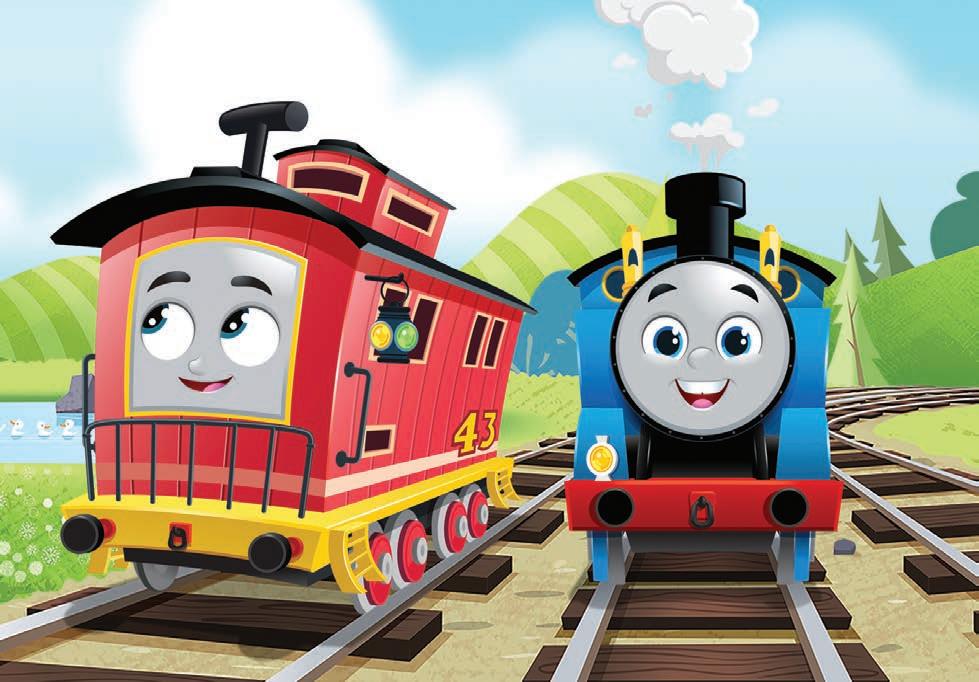
DICKSON: At Mattel, we are passionate about the positive impact our brands can make in the world, and that’s why we’re evolving from a culture of mass marketing to mass-mattering—cultivating a mindset of: purpose times influence creates impact. We’ve created UNO decks celebrating Pride and launched a braille edition last year so that sight-impaired people could play the number one game in the world for the first time. We partnered with Aaron “Wheelz” Fotheringham to create one of the coolest RC products. It’s a remotecontrolled wheelchair that allows kids to experience the incredible talents of Aaron himself. We recently introduced an autistic character, Bruno, into our iconic Thomas the Tank Engine content. American Girl offers several other specialized items. We have an asthma and allergy set and service dog gear. We’ve got crutches, wheelchairs, a diabetes kit, [and] hearing aid placement is also available for our 18-inch dolls. When you boil it down, it’s all about thoughtfulness, inclusiveness and details. Another great example is that we redesigned all our transportation vehicles in Little People to be wheelchair-accessible. And over 50 percent of our Little People represent diversity. I could go on and on with all of these different examples, and we’re so proud of them.
TV KIDS: Mattel has another iconic brand, Hot Wheels. Tell us about the movie and the TV content in the works.
DICKSON: Hot Wheels is the single largest vehicle toy brand in the world, multiple years running. We are so proud to work with best-in-class partners on unlocking the brand in the content arena, including Warner Bros. Pictures and J.J. Abrams’ Bad Robot, to create a liveaction film based on Hot Wheels. The high-throttle film will bring to life our beloved multi-generational franchise. It will showcase some of the world’s hottest and sleekest cars and launches around toys, digital gaming and even Web 3.0. We’re also gearing up to announce several TV titles based on Hot Wheels. We look forward to unlocking the value of Hot Wheels and bringing it to life for new audiences for multiple generations to come.
TV KIDS: Besides films and television shows, Mattel produces a broad range of content, including short-
form and digital gaming. Tell us more about this additional content.
DICKSON: Our objective is to always put our brands where our consumers are, and Mattel will always meet the fans of our iconic brands wherever they are and make sure that our brands are also discoverable in innovative and exciting ways: physical toys, television, film, digital gaming, YouTube, Web 3.0, the metaverse, literally everywhere and anywhere in between. Our television slate has 12 series in the making and specials on streaming and broadcast platforms globally. We also continue to rapidly expand our digital gaming footprint. In 2022 alone, we saw the Roblox debuts for Masters of the Universe, Barbie and Polly Pocket. We launched the highly anticipated Forza Horizon 5: Hot Wheels game. We executed collaborations between Masters of the Universe and several of the most popular gaming platforms in existence, such as Fall Guys and Stumble Guys. We also launched the Barbie “Brooklyn” Roberts YouTube series, Barbie: Life in the City . We will continue doubling down on content and digital gaming in 2023, and I can’t wait to share more exciting projects our team is working on across multiple brands. But ultimately, everywhere that our consumer engages, Mattel brands will be there.
TV KIDS: Is digital gaming eroding physical play? Because, after all, a considerable part of Mattel’s business is also physical toys.
DICKSON: We get that question a lot. Physical play is not going anywhere. We see the industry of physical play continue to grow. It’s projected to grow by Euromonitor. But as technology advances and new platforms emerge, consumers are hungry to see Mattel IP in cutting-edge spaces such as digital gaming. We don’t view traditional play and digital experiences as competitive but rather complementary to one another. It’s just a larger playground. We’re excited about Mattel’s unique opportuni ty to pioneer what’s possible in both the digital and the physical worlds, continuously bridging the gap between the two and creating unforgettable experiences for our fans.
 By Anna Carugati
By Anna Carugati
With facilities in Toronto, New York, Dublin and Bali, 9 Story Media Group creates, produces and distributes high-quality programming for young viewers. Although budgetary challenges are impacting commissioners of children’s programming, Vince Commisso, president and CEO, is confident in 9 Story’s ability to meet current and future demands for content. The company is intent on reaching broader audiences. It has branched out into live-action shows and continues its commitment to increasing representation and embracing diversity.
TV KIDS: How do you view the current children’s content landscape?
COMMISSO: We’re seeing a belief, and an accurate one, that the current business model, as a result of streaming content, is not as lucrative as the one that preceded it. That’s caused a bit of a pause in the marketplace, manifesting itself in two ways. One is a reduction in commissions, and the second is a reduction in budgets. I think that’s going to be the case for the foreseeable future. And the macroeconomic factors— interest rates and reduction in consumer spending— certainly don’t help. This will all have to sort itself out until new perceptions emerge as a result of more efficiencies that production companies, streamers and distribution platforms play out. It’s time for companies like ours to take a look at how we do everything and reassess and adjust for how the world is moving forward, especially in content.
TV KIDS: Where do you see opportunities for 9 Story?
COMMISSO: I always think times like this are good opportunities because you can look internally and say, what we’ve strategized before doesn’t apply to the market today. We probably need to reorient how we do things. That means there’s an internal review of all our processes, which we’re undertaking, and that’s healthy. We’re no different from any other company in the space. Looking at how they bring things to market and [their] unit costs is very important, but I think there are also great opportunities to do things differently with outside groups. We’re looking at all kinds of partnerships that we’ve not looked at before, and I think we have willing participants on the other side, which two years ago [might not have been the case].
We will continue doing what we’ve done before with our animation. It’s still best in class, ranging from preschool to 6-to-11. It’s terrific stuff; we’ll never change that because delivering high-quality content is important to our audience. Digital is becoming more relevant in how kids consume content today, especially the young ones. So that’s an area we’re looking to grow. We’ve established a live-action division in the U.K. that has a show in production that will be aired soon on CBBC and a platform in the U.S. that we’re excited about. Those opportunities are available to us as a result of consistently looking at what we do and how we do it, which probably would not have been the case if we were always trying to catch up to market demand. That is always good. Companies need that opportunity, and I’m excited about how we are moving forward as a company. Content will be in great demand, always. There’s a little bit of a pause now. Once that pause is worked through the system, the great demand will emerge again.
TV KIDS: How do you see the budgets of broadcasters and AVOD platforms? Is everyone being cautious right now? COMMISSO: Budgets are coming down. I think that’s healthy. There was money being spent that probably didn’t need to be, and there was an artificial inflation of budgets for shows that perhaps didn’t have the return given the spend. Now we’re being forced to be more efficient, and every dollar spent has to have value on the screen, which is a better outcome for our clients—the children. I also think there’s a focus on content that is broad-ranged and serves mass audiences. There was a bit of a focus on content that super-served segments of the population, [to the point that] we probably didn’t do a good enough job serving other segments or broad audiences. When you create a show, you first have to get an audience. Once you do that, you can serve segments of it as necessary, given the authentic creative conceit of the show. I think we’re going back to that, which is great.
TV KIDS: What types of projects are broadcasters, SVODs or AVODs willing to invest in?
COMMISSO: Budgets are reduced. The change is more toward moving us back to where we were with lower budgets and shows that work for mass audiences. But that doesn’t mean we can’t celebrate things that are unique voices or that come from distinct groups. A great example is a show we’re doing with PBS KIDS called Rosie’s Rules, which launched in October. A young Mexican-American girl is the lead. That has a massive audience because it’s about family structure and her role in it, which we can all relate
to. It celebrates the things we have in common. But it also celebrates Mexican and American cultures, which are not mutual ly exclusive. There’s a relatability for everyone involved. That’s more of what I think we’ll see.
TV KIDS: What motivated branching out into live-action series?
COMMISSO: We determined that we have to serve our audience with a broader content offering. We had the opportunity in 2020 to bring on board an award-winning development executive named Gráinne McNamara. She was at Disney and King Bert Productions. We are doing a liveaction show called A Kind of Spark that Gráinne optioned and brought into the company. It’s based on a book of the same name written by a neurodivergent author named Elle McNicoll. It’s set to launch this spring on CBBC. We’re also in production on Blue’s Clues & You!, with several new series in development. We did a series for Apple TV+ called Hello, Jack! The Kindness Show, created by Jack McBrayer and Angela C. Santomero. Live action is a focus because we think it’s a growth opportunity. There’s a movement toward it from kids’ perspectives, especially as they get older. We decided to serve our younger kids with animation and then bolster that by serving the older kids as they leave animation and move to live action.
TV KIDS: 9 Story has made significant strides in increasing its diversity and inclusion initiatives. Tell us about the strategy. COMMISSO: First, [we acknowledged] that we didn’t know what we didn’t know. It started by bringing our chief inclusion and people officer, Farrell Hall, on board in September 2021, which has made a tremendous difference. Farrell has an extensive background in DEI and HR, which is a great combination, given the number of people we have and the diversity of our shows. That educated us about what we have to do versus what we have been doing. As a children’s animation company, we always took the responsibility of authentically presenting characters from all different walks of life and cultural backgrounds. We did that in a way we thought was authentic. Farrell helped us realize that we could take that level of authenticity higher, and we have.
We’ve had several shows that represent underserved groups and [illustrate] issues in society positively but do not take away from the entertainment value of the content. We’ve dealt with issues like racism and microaggressions in Karma’s World. We have LGBTQ+ characters like Fred the bison, who’s non-binary, in Chris Nee’s Ridley Jones. We have a new character in Daniel Tiger’s Neighborhood, Max, who is living with autism. In Xavier Riddle and the Secret Museum, we featured Temple Grandin as one of our real-life heroes. In A Kind of Spark, the lead character is neurodivergent. We want our shows to represent the world kids live in as authentically as we possibly can.
TV KIDS: Are AVOD and FAST extending 9 Story’s reach?
COMMISSO: AVOD has given new life to some fantastic older properties in our library, like Barney, Garfield and
Friends and Angelina Ballerina. That’s a good outcome because these brands live on. We often see parents who used to love these shows as kids introduce them to their children. There are great legacy properties that now have new outlets and new ways to access children. We’re just starting to expand our reach on FAST channels. We used to view these channels as competitive or potentially cannibalistic to other platforms and channels. But we now believe that the best strategy is “more is more” since audiences are consuming content in different ways. Because there are so many platform opportunities, audiences are fragmented. Whenever we can access them with great content, we take that opportunity. FAST channels give us a significant opportunity to do that.
TV KIDS: Given the fragmentation, what are some of the best strategies to build a brand in today’s market?
COMMISSO: It’s about getting eyeballs on the content, and that’s a continuous challenge. We started this business when there were three platforms in the U.S., and now there’s a sea of content across [a vast number of] platforms. There’s no one-size-fits-all approach when we talk about bringing content to market. You have to lean into what makes each brand unique and then create a strategy around presenting that brand to the targeted audience. You must be willing to invest in that brand to ensure its discoverability. This includes all the basic tenets of marketing, from publicity to paid spend, from a digital strategy to on-the-ground events. As the brand owner, all marketing tactics can no longer be left to the broadcast partner because many platforms that deliver and distribute the content no longer create opportunities for promotion in linear spaces, so we have to. I often say to our people that, as producers, more of the [promotional and advertising] weight is on us. We have to figure out how to do it as efficiently as we can and be as consistent with the brand as we can. We may use certain tenets in all of it, but the tone of each will have to be tailored to the brand. YouTube is a key to that and should be part of any smart discoverability strategy.
Rosie ’s Rules, focused on a young MexicanAmerican girl, launched on PBS KIDS last year.

With 20 Emmy Award nominations to her credit, Chris Nee has shown a passion for driving forward diversity and inclusion in children’s media. Her roster of hits includes Doc McStuffins, which centers on a 6-year-old African-American girl, and Vampirina Through her overall deal with Netflix, Nee has delivered such shows as Ridley Jones and Ada Twist, Scientist , on which she collaborated with Barack and Michelle Obama’s Higher Ground Productions. Nee also worked with the Obamas on We the People and is shepherding Spirit Rangers , which is from a Native American creator and counts an entirely Native writing tea m.
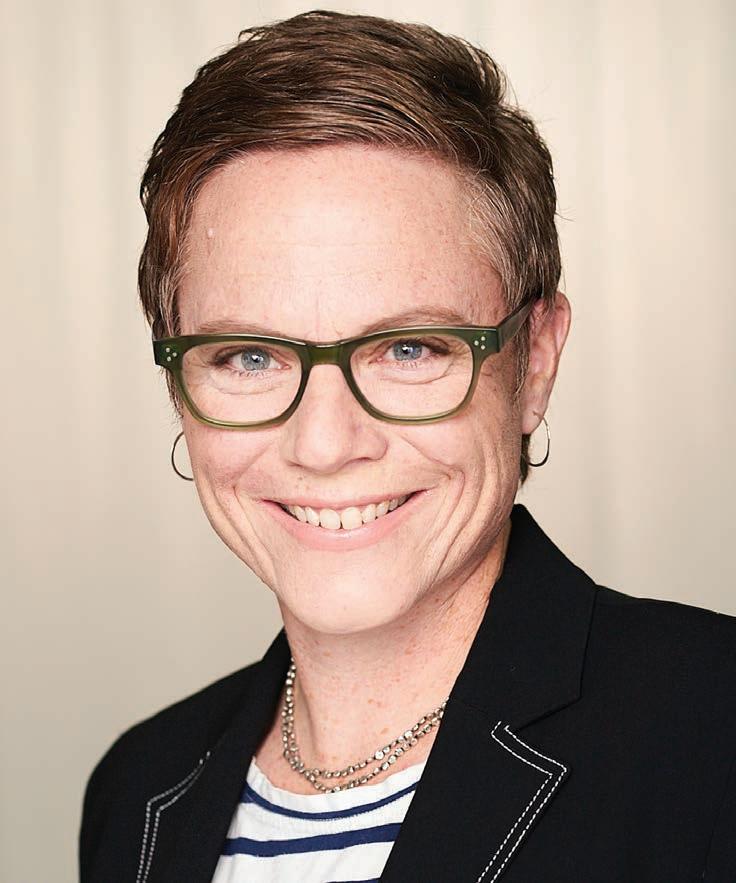
TV KIDS: Has representation and thinking around inclusivity in children’s TV evolved from when you pitched Doc McStuffins over a decade ago?
NEE: A lot has changed since then. For one, I would not run a show like Doc McStuffins now. I was not the showrunner of Ada Twist. I agreed to come on, which is a model that I’ve been using to elevate often first-time showrunners and creators, letting them be the showrunners and executive producers of their shows and taking this kind of aggressive [stance of], Look, we would take this leap with a white guy. Somebody has to be the one
who gives them that [opportunity], but it’s also about being there to guide people through because I’m so familiar with the process.
With Ada Twist, I did the bible and the pilot, and after that, we brought on a Black showrunner, Kerri Grant, who’s amazing. I look at Doc, and I’m like, I would not be making that show anymore. And yet I’m glad we made that choice then; we were in a different world. The business has definitely changed. When we did that show, we really thought [having a Black lead character] was going to hurt the ability to merchandise that series. We made it despite the fact of, Look, this means it’s probably not going to be [easily merchandised]. And, of course, that turned into a huge product show! That’s actually the biggest influencer of why it opened so many doors. Businesses are businesses, and it was about them seeing that there was a deep merchandising path, as well as the fanbase—they’re all connected. But that is the piece that [made them say], We’re going to do more. And yet it’s never as much as it should be; it just isn’t.
TV KIDS: How much work is still to be done regarding inclusivity and representation on screen?
NEE: It’s important that you’re seeing it on screen, but also, you’re not going to see it on screen properly if we’re not starting to see real change in the halls in which we work. In that respect, I still get frustrated because, of course, we’re not there. We tend to do three steps forward and two steps back. I wish we could just do a ten-step leap forward. We have so much to catch up on. But I do get excited when I look around a place like Netflix or Disney. I do see a lot more diversity in the ranks. I’m seeing a lot more diverse communities becoming showrunners and having that aspiration. So, I’m hopeful, and I also am not hopeful that it will happen at the speed [it needs to]; it should have already happened. My big thing is we have to stop having so many programs and just hire people into the jobs. That’s really what I try to do.
TV KIDS: Talk to us about your creative process. What drives you, and how do you go about crafting a show? NEE: I’m very character-based, as in, what is the world that I’m going to be able to play in for a really long time? I’ve been in this business for close to 30 years, so I’ve seen many different cycles. Right now, we’re in for these very short-order, two-season things. God help me if I can’t find enough stories for that! But when you look at Doc , we had to come up with 400 stories for that series. So, you want to make sure you have a world that there’s an engine in. You want to be able to very easily say, I can come up with stories for two or three seasons. My biggest secret is that I am only trying to amuse and delight myself. If you ask me who I am writing for, I think I’m supposed to say the kids—but I am not writing for the kids. I need to laugh at the characters. I need to be able to write monologues that make me laugh; I want to be able to be brought to tears. If I am feeling that invested and building something that can be for me, it does seem to be the way in which I bring all these other people along.

